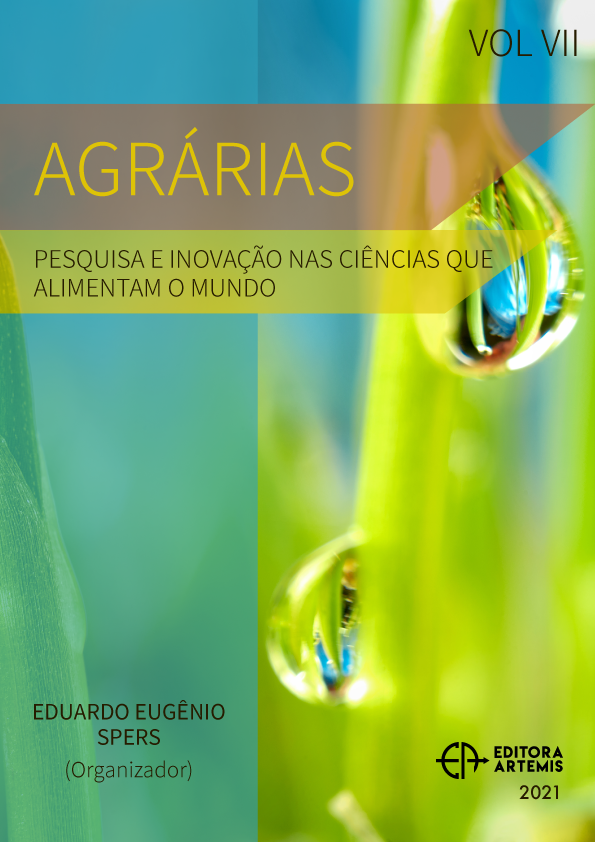
CARACTERÍSTICAS AGRONÔMICAS E RENDIMENTO DE GRÃOS DA CULTURA DO MILHO (ZEAMAYS L.) SOB DIFERENTES DENSIDADES
Para a implantação da cultura do milho é preciso levar em consideração algumas práticas como, a alteração no espaçamento e na densidade de plantas na linha como uma das práticas de manejo mais importantes para maximizar o rendimento de grãos do milho, pela otimização do uso de recursos naturais (água, luz e nutrientes). O estudo teve por objetivo analisar o efeito de diferentes densidades de cultivo sobre as características agronômicas e o rendimento de grãos da cultura do milho, considerando as condições edafoclimáticas do município de Campinas das Missões, RS, no ano de 2016/17. Para a realização, foi utilizada a abordagem quantitativa, procedimento estatístico e laboratorial, sendo os dados coletados por observação direta intensiva e analisados através da estatística descritiva utilizando médias, teste de Tukey a 5 % de probabilidade de erro e matriz de correlação de Pearson. O experimento foi conduzido em blocos ao acaso com quatro repetições, considerando cinco densidades de cultivo (50, 60, 70, 80 e 90 mil plantas ha-1) para os híbridos NS 56 PRO RR e MG 30A37. Segundo o teste de Tukey, o híbrido NS 56 PRO RR, apresentou diferença significativa apenas nos quesitos número de fileiras por espiga e número de grão por fileira, que sofreram interferência da densidade de semeadura. Já o híbrido MG 30 A 37 PW, presentou diferença significativa entre os tratamentos apenas para o número de fileira por espiga. E em relação ao rendimento de grãos a densidade de semeadura não influenciou de forma significativa para que houvesse diferença estatística entre elas. Desta forma, conclui-se que a densidade de semeadura interfere principalmente no número de fileiras por espiga, dentre os componentes de rendimento que foram avaliados neste estudo com dois híbridos de milhos, sendo possível observar que a população de plantas não interferiu no rendimento final da cultura.
CARACTERÍSTICAS AGRONÔMICAS E RENDIMENTO DE GRÃOS DA CULTURA DO MILHO (ZEAMAYS L.) SOB DIFERENTES DENSIDADES
-
DOI: 10.37572/EdArt_18122151419
-
Palavras-chave: Híbrido de milho. População de plantas. Componentes de rendimento. Rendimento de grãos.
-
Keywords: Corn hybrid. Plant population. Yield components. Grain yield.
-
Abstract:
For the implementation of the corn crop it is necessary to take into account some practices such as changing the spacing and density of plants in the row as one of the most important management practices to maximize the corn grain yield, by optimizing the use of natural resources (water, light and nutrients). The study aimed to analyze the effect of different crop densities on the agronomic characteristics and grain yield of the corn crop, considering the edaphoclimatic conditions in the city of Campinas das Missões, RS, in 2016/17. For the realization, a quantitative approach, statistical and laboratory procedure was used, being the data collected by intensive direct observation and analyzed through descriptive statistics using means, Tukey test at 5% error probability and Pearson correlation matrix. The experiment was carried out in randomized blocks with four replications, considering five growing densities (50, 60, 70, 80 and 90 thousand plants ha-1) for the hybrids NS 56 PRO RR and MG 30A37. According to Tukey's test, the hybrid NS 56 PRO RR showed significant difference only in the items number of rows per ear and number of grains per row, which suffered interference from sowing density. The hybrid MG 30 A 37 PW, on the other hand, presented a significant difference between treatments only for the number of rows per ear. And in relation to grain yield, sowing density did not significantly influence so that there was a statistical difference between them. Thus, it is concluded that sowing density interferes mainly in the number of rows per ear, among the yield components that were evaluated in this study with two corn hybrids, and it is possible to observe that the plant population did not interfere in the final yield of the corn. culture.
-
Número de páginas: 12
- Michael Ivan Leubet
- Leandro H Lopes
- Luã Carlos Perini
- Marcos Caraffa

